Visiting South Korea’s Jeju Island, dubbed ‘Hawaii of Asia’
It attracts 14 million tourists a year, but you’ll struggle to find any other Aussies on this picturesque Island getaway.

“Jeju? I’ve been working here for years and I’ve never heard of that before.”
So says the woman checking me in at Sydney Airport for my Scoot flight to this South Korean holiday destination, via Singapore.
I confess to her that, up until a few weeks ago, I was exactly the same.
In fact, Jeju is a tourist hotspot – an island off the south coast of South Korea that’s home to 680,000 people, but attracts some 14 million tourists annually. 10 million of those are Koreans travelling domestically, often hopping on a short flight for a weekend out of the city.
Most of the rest come from China. But for Australians, despite our love of travelling to every corner of the globe, Jeju isn’t really on the map.
There are some understandable reasons why. There’s a language barrier – Jeju residents generally speak less English than those in mainland Korea.
And as with mainland South Korea, Google Maps doesn’t really work here as a navigational tool (download NAVER maps instead before you arrive).
Our tour guide Janice proudly tells me Jeju is considered “the Hawaii of Asia,” and flying in over the island as the sun rises, I understand the comparison: Mount Halla rises dramatically from the centre of the island, a huge volcanic crater shooting almost 2000m out of the sea. Another 368 smaller volcanic formations – called ‘Oreum’ – dot the island, which measures 74km east to west.
But those expecting another Hawaii will find something more untouched, less geared towards mass tourism, a surprising feature of the island given just how many visitors it hosts.
Perhaps Koreans come here in droves for exactly that reason: it’s stayed true to its roots.
Our first stop is to the island’s World Heritage Centre, a good spot to get a handle on all of Jeju’s natural wonders and decide which ones you want to focus on (note – not all are always open to the public, to keep them pristine).
The island itself is listed as one of the New Seven Wonders of Nature, the result of a global poll created in 2007 that drew more than 100 million votes.
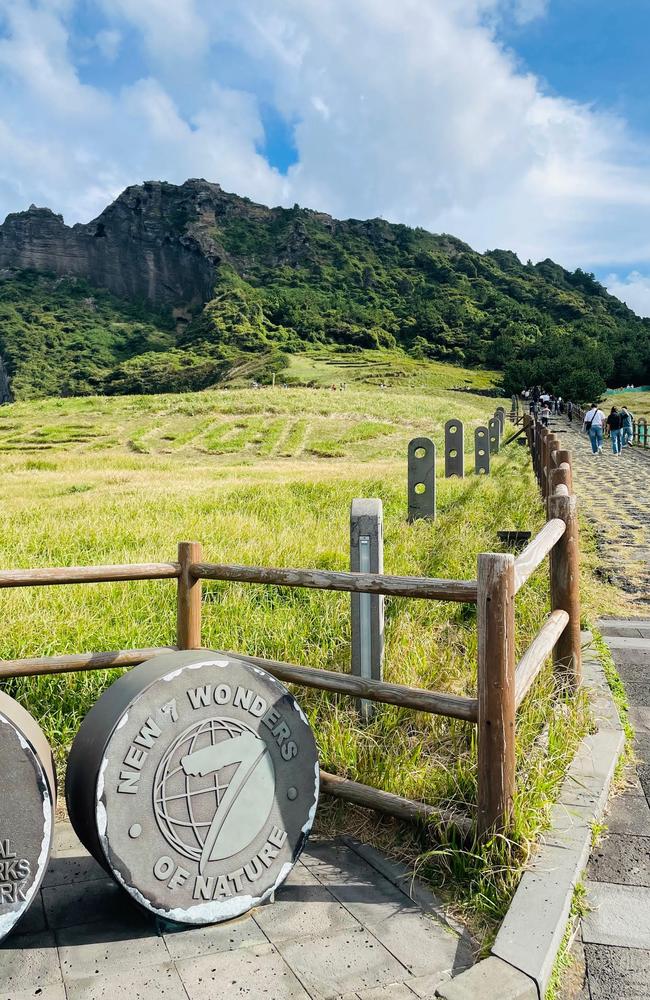
Our first natural wonder is Seongsan (or “Sunrise”) peak, a spectacular rock formation at the easternmost point of Jeju that locals traditionally climb on the morning of January 1 to see the first sunrise of the year.
A steep, sharp climb of 500 steps gets you to the top in under half an hour, where you can then peer down to the internal crater of this volcanic formation, now covered in lush greenery.
Jeju is an island with a fascinating history and a unique culture its residents are fighting hard to preserve: The “Haenyeo,” a 3,000-strong community of older women divers who take to the sea around the island to gather shellfish.
These women are seriously tough, keeping old traditions alive as they dive up to twenty metres below the ocean surface, holding their breath for up to 20 metres at a time without the aid of an oxygen tank or much other modern diving equipment.
Jeju’s diving tradition dates back hundreds of years; by the 18th century, female divers outnumbered men, and it eventually became a profession that mothers handed down to their daughters. But to be Haenyeo is not just a job, it’s a way of life, with unique traditions, costumes, and ceremonies all a part of life spent in the water.
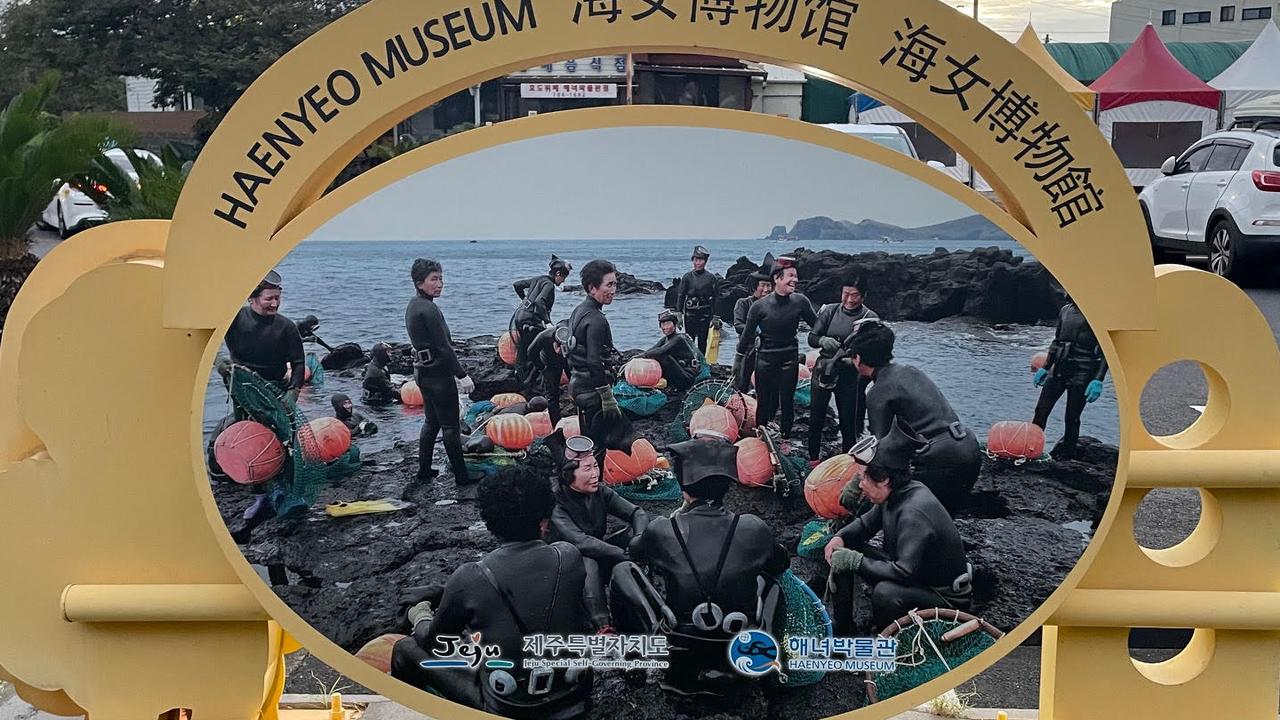
All of that’s in danger of dying out now, as 70 per cent of the remaining Haenyeo are over 70 years old. Some women are as old as 90 and are yet to retire.
It’s dangerous work and a tough life, but the two Haenyeo we meet, Moon and Kyong, are committed to keeping it alive.
There’s a saying on this island – Jeju was made by Haenyeo. When Jeju was poor, the Haenyeo went into the sea and risked their lives to bring riches.
Nowadays, there are other, easier for young people on Jeju to enrich their lives, with Haenyeo traditions perhaps soon living on only as something to be shown to tourists.
Top Jeju activities
1. Dongmun Traditional Market
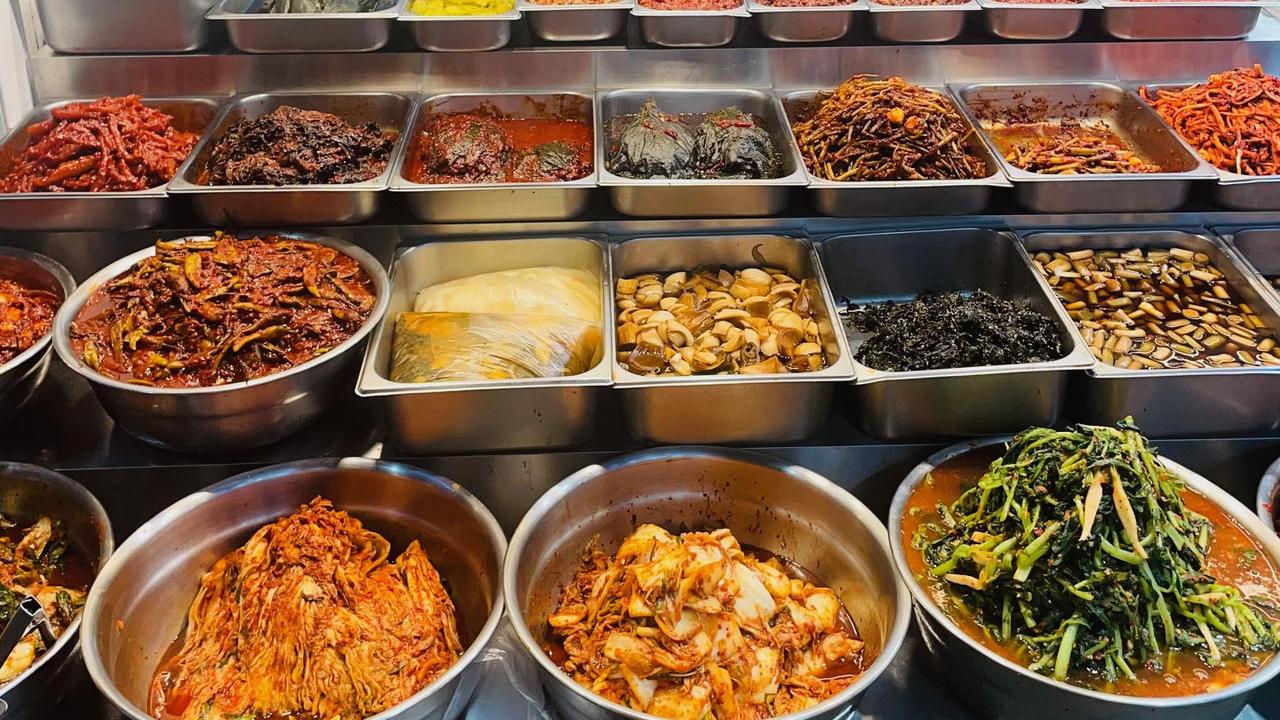
Jeju’s largest and oldest permanent market is filled with colourful food stalls full of local delicacies. Some stalls even serve drinks so you can sip a takeaway cocktail as you wander the aisles – very civilised.
2. O’Sulloc Tea Museum
This attracts theme park-level crowds, such is the Korean fervour for tea. In truth, it’s more a huge shop and restaurant than a museum, but it’s worth a visit for a green tea ice cream as you escape the hordes of shoppers inside and wander the serene tea fields.
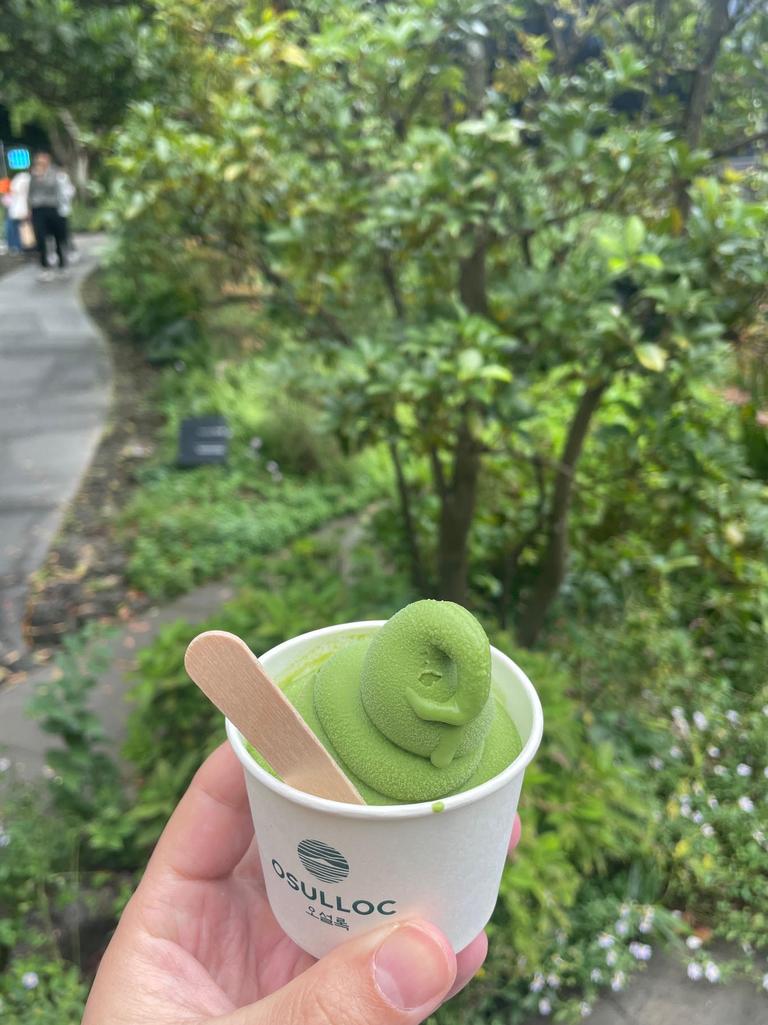
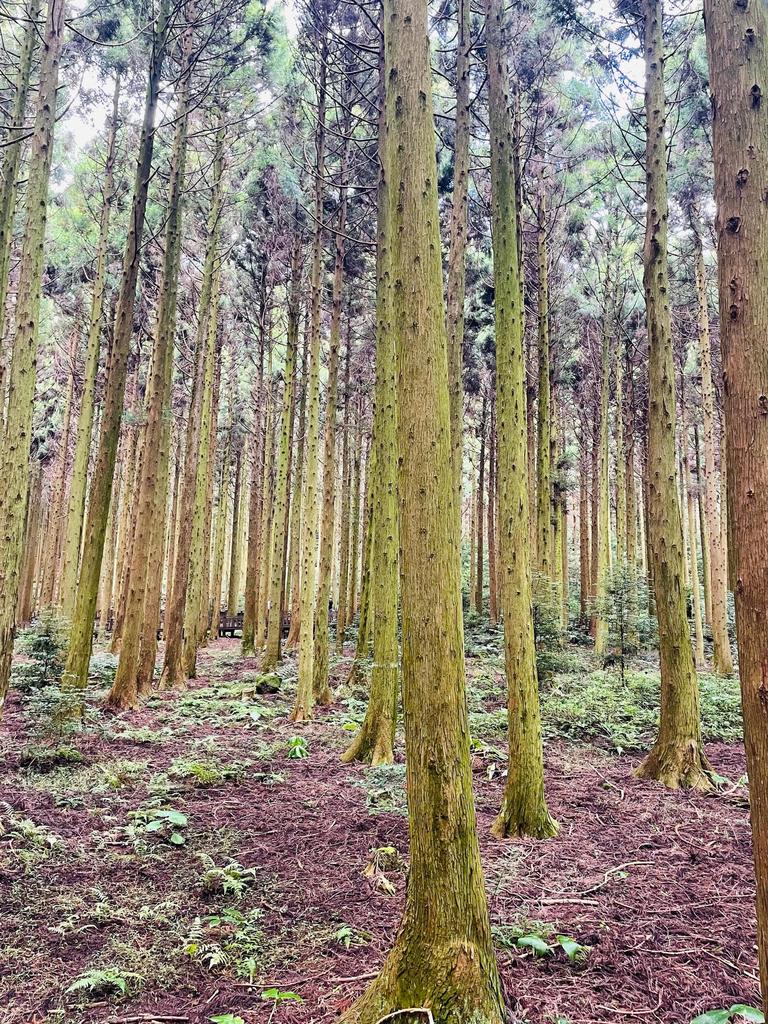
3. Seogwipo Natural Recreational Forest
Or really, any of the forest reserves dotted around the island. Jeju is home to more than 400 different species of trees, and a walk through one of its many forests is a relaxing pit stop.
4. Dongbaek (Camellia) Village
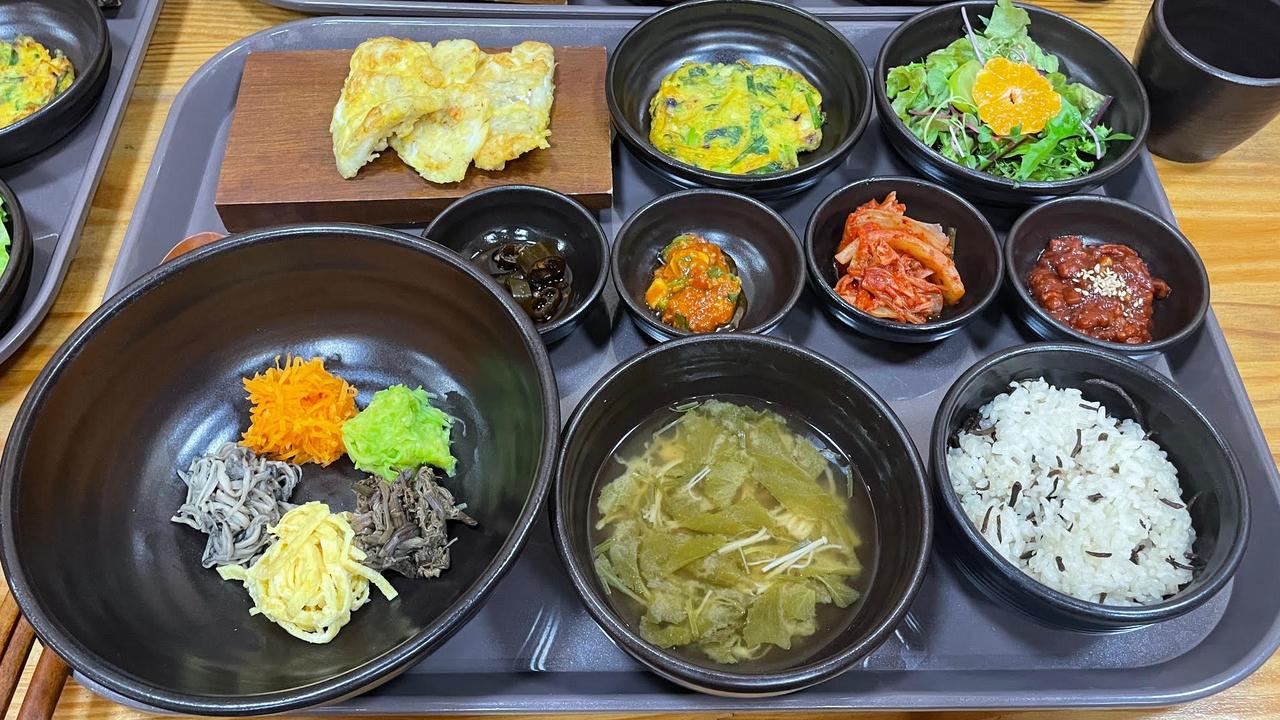
Our visit to this small village, famed for its Camellia trees, starts with a task: We enter a forest and collect Camellia seeds that have fallen on the ground, bringing them back to a local business where they’re turned into seed oil used in cooking and beauty products. Our small amount of work earns a huge reward: A delicious lunch of Bibimbap, complete with oil from the seeds we’ve just harvested.
5. Haenyeo Museum
More Coverage
The percept place to dive into (no pun intended) Jeju’s rich history of Haenyeo diving women. This three-level museum is filled with fascinating exhibitions about one of the world’s most unique cultures.
Scoot flies to Jeju, South Korea from Australia via Singapore.
The writer travelled to South Korea as a guest of Scoot Airlines






